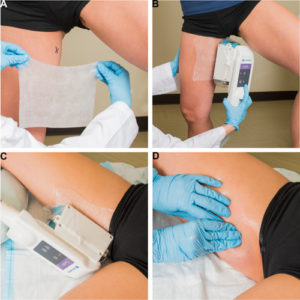Transformer core provider today? Transmart transformer manufacturers are an export oriented company with customers located in 40+ countries. We supply high quality tape wound cores in Nanocrystalline, Amorphous and Silicon Steels. Product applications including Common mode chokes ,Hall Effect Current Sensors, Low Voltage and Medium Voltage instrument transformers, Earth Leakage Circuit Breakers ,Reactors, Inductors etc. See even more details at transformer cores. As we focus on the improvement of the quality, this product has been manufactured with high quality and stable performance. It is of fine workmanship and good quality and is well sold in the domestic market. A positive market response indicates that the product has a good market prospect.
We know that the actual transformer always works in AC state, and the power loss is not only on the resistance of the coil, but also in the iron core magnetized by alternating current. Usually, the power loss in the iron core is called “iron loss”. The iron loss is caused by two reasons, one is “hysteresis loss” and the other is “eddy current loss”. Hysteresis loss is the iron loss caused by the hysteresis phenomenon in the magnetization process of the iron core. The size of this loss is directly proportional to the area surrounded by the hysteresis loop of the material. The hysteresis loop of silicon steel is narrow, and the hysteresis loss of transformer core made of silicon steel is small, which can greatly reduce its heating degree.
As the iron core of the transformer, generally, 0.35mm thick cold rolled silicon steel sheet is selected. It is cut into long pieces according to the size of the required iron core, and then overlapped into “day” shape or “mouth” shape. In principle, in order to reduce eddy current, the thinner the silicon steel sheet, the narrower the spliced strip, and the better the effect. This not only reduces the eddy current loss and temperature rise, but also saves the material of silicon steel sheet. But in fact, when making silicon steel sheet iron core. Not only from the above favorable factors, because making the iron core in that way will greatly increase the working hours and reduce the effective section of the iron core. Therefore, when making transformer iron core with silicon steel sheet, we should start from the specific situation, weigh the advantages and disadvantages and choose the best size.
As one of Transmart Industrial’s multiple product series, mumetal cores series enjoy a relatively high recognition in the market. Transmart Industrial provides diversified choices for customers. The mu-metal cores are available in a wide range of types and styles, in good quality and in reasonable price.Transmart Industrial effectively improves after-sales service by carrying out strict management. This ensures that every customer can enjoy the right to be served. Discover even more information at https://www.transmart.net/.
However, at the same BM, the loss of Fe based amorphous alloy is smaller than that of 0.23mm thick 3% silicon steel. It is generally believed that the reason for low loss is the thin thickness and high resistivity of iron-based amorphous alloy strip. This is only one aspect. The main reason is that the iron-based amorphous alloy is amorphous, the atomic arrangement is random, there is no magnetocrystalline anisotropy caused by atomic directional arrangement, and there is no grain boundary causing local deformation and composition offset. Therefore, the energy barrier hindering domain wall motion and magnetic moment rotation is very small, with unprecedented soft magnetism, so it has high permeability, low coercivity and low loss.
The soft magnetic particle core will still be high along the high BS in the future μ、 High Tc, low PC, magnetic powder core is a soft magnetic material made of ferromagnetic powder and insulating medium. Because the ferromagnetic particles are very small (0.55 for high frequency) μ M is separated by non-magnetic electrical insulating film material. Low HC and high frequency, miniaturization and thinness to meet the trend of increasingly thin film, miniaturization and even integration of magnetic components.
